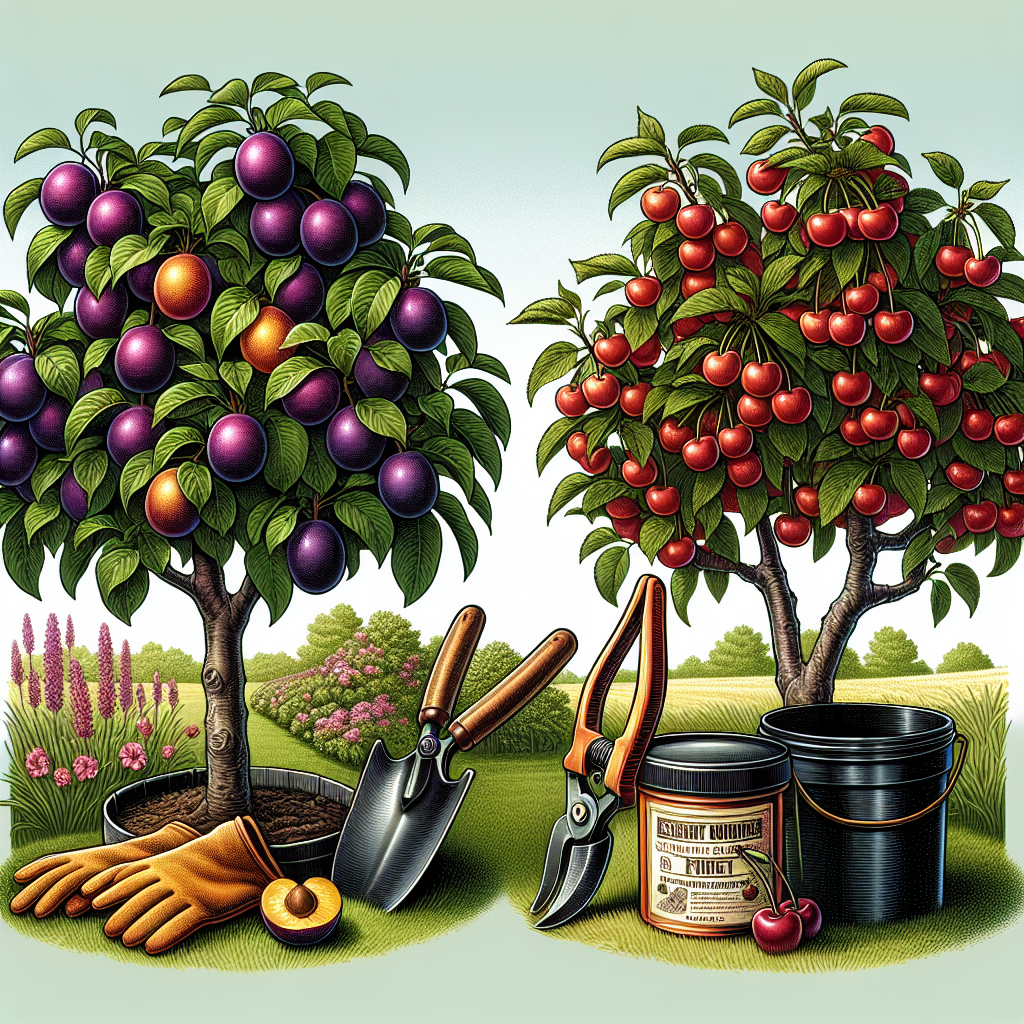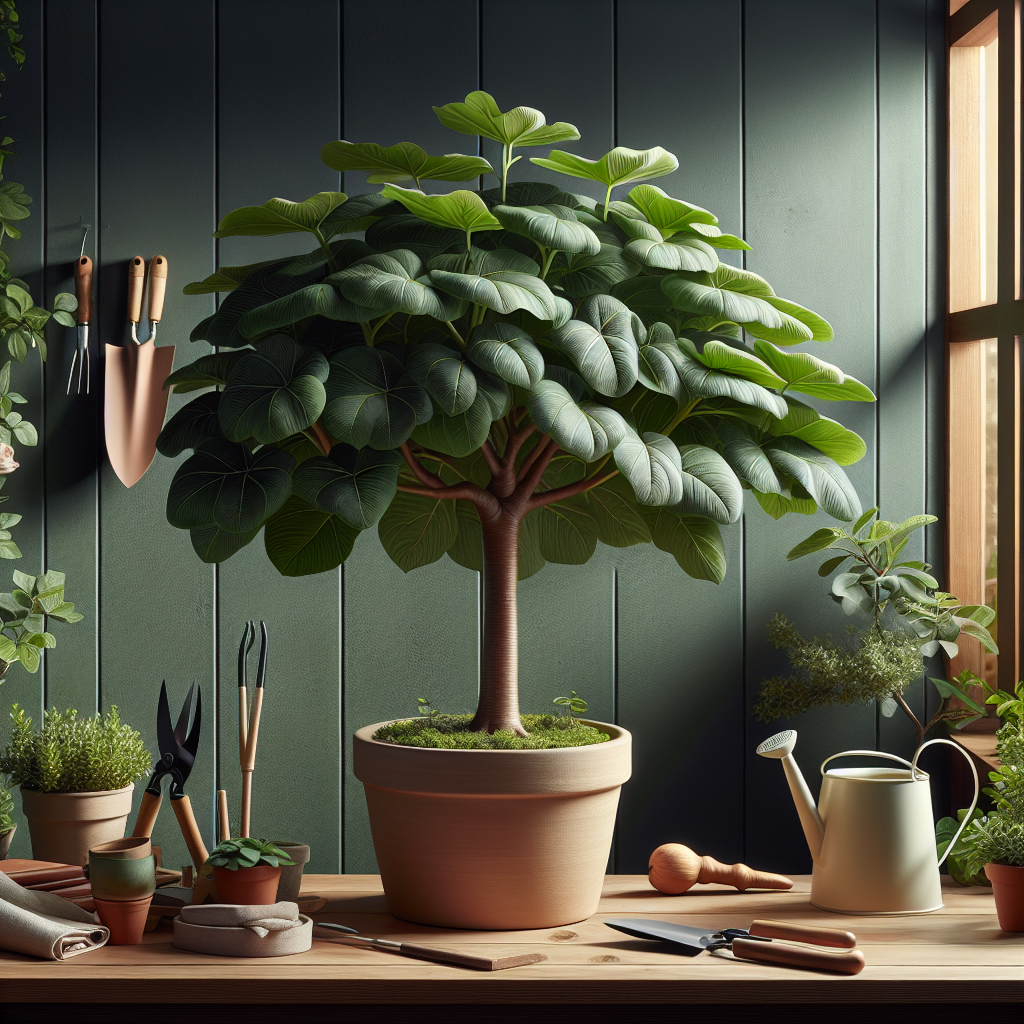Layering and Air Pruning: Advanced Techniques Explained
Updated May 1, 2024 at 7:00 am

Understanding Layering and Air Pruning
When you’re looking to enhance the vitality and productivity of your plants, advanced horticultural techniques like layering and air pruning can make a significant difference. These methods focus on optimizing root growth, which is critically important for overall plant health. By understanding and utilizing layering and air pruning, you might find solutions to some gardening challenges you could be facing.
Basics of Layering in Plant Propagation
Layering is a propagation technique that encourages a stem to develop roots while it is still attached to the parent plant. Common types of layering include simple, tip, compound, and air layering. This method is great for plants that are hard to propagate through cuttings, or for gardeners who prefer a somewhat more hands-off approach to propagation.
Techniques of Layering
- Simple Layering: Involves bending a low-growing branch to the ground, making a slight wound on the branch, then covering it with soil while leaving the tip exposed.
- Tip Layering: Suitably executed in plants whose tips naturally root when they touch the ground, like in blackberry or raspberry plants.
- Compound Layering: Involves creating several wounds along one branch which are then covered with soil, creating multiple plants from a single branch.
- Air Layering: Intended for plants that do not root easily, involving wounding a branch, applying rooting hormone, and surrounding it with a moist medium such as sphagnum moss and plastic wrap until roots develop.
Benefits of Air Pruning
Air pruning is a natural process that occurs when the tip of a root is exposed to air. Unlike traditional potting techniques that can lead to circling or girdling roots, air pruning encourages the growth of healthier, more fibrous roots. As the primary root tip stops growing upon hitting the air, a multitude of secondary roots develop, leading to a more robust root system.
Understanding Air Pruning Containers
One of the main ways to utilize air pruning is through specialty pots designed to enhance this natural process. These containers come in various forms, from fabric pots to ones with perforated or conical walls. Air pruning pots often lead to a dramatic improvement in plant growth and overall health.
Let’s delve into some of these air pruning products and share insights based on real-world reviews and experiences:
Fabric Grow Bags – A Popular Air Pruning Product
Fabric grow bags, such as the VIVOSUN 5-Gallon Heavy Duty Thickened Nonwoven Fabric Pots, offer an effective way to air prune the roots of plants. These bags are praised for their breathability, affordability, and portability, according to numerous consumer reviews.
When roots reach the edge of a fabric pot, they sense the drier air outside and will cease to grow in that direction. This encourages the development of lateral roots within the bag, leading to a more extensive root system.
Pros:
- Eco-friendly and reusable
- Promotes a strong root system
- Prevents roots from becoming root-bound
Cons:
- Larger sizes can be difficult to move
- Soil may dry out more quickly, requiring frequent watering
Find This and More on Amazon
Plastic Air Pruning Pots
Another contender in the air pruning market is the plastic air-pot, such as the Superoots Air-Pot. Thanks to the innovative design featuring rows of perforations or cones, the pot not only prevents roots from circling but also promotes healthier root development. Gardeners looking for a solid investment in their plant’s future often choose plastic air pruning pots for long-term use.
Reviewers often commend these pots for improving plant performance and yield. Due to their design, Superoots Air-Pots facilitate great air flow and drainage, which contributes to reduced water logging and the consequent root rot.
Pros:
- Durable and can last many years
- Enhances nutrient uptake
- Accessible for cleaning and reusing
Cons:
- Initial investment is higher than traditional pots
- May require more frequent watering
Find This and More on Amazon
How to Choose the Right Air Pruning Product
Selecting the appropriate air pruning container for your plants might seem a bit daunting at first glance, but it can be simplified by assessing your specific needs. Consider factors such as the size of your plant, the type of plant, and your watering habits.
If you have smaller plants or herbs, a fabric grow bag like the Smart Pot may be more suitable. Smart Pots are widely endorsed for their durable fabric that withstands the elements and encourages robust root systems. On the other hand, for larger shrubs or trees, a more rigid air pruning pot, like the ones offered by Canna, could provide the support necessary for bigger plants.
Pros:
- Improves air circulation to plant roots
- Encourages root branching leading to better nutrient and water uptake
- Variety of sizes to cater to different plant types and sizes
Cons:
- Some fabrics may degrade over time
- More susceptible to temperature fluctuations compared to traditional pots
Common Mistakes to Avoid with Air Pruning
While air pruning has numerous benefits, there are mistakes that can hamper its effectiveness. Overwatering is a common issue, as soil in fabric pots can dry out more quickly. Another mistake is neglecting to transplant when necessary; if the roots have filled the container to capacity, it’s time to move up a size to continue healthy growth.
Additionally, choosing the wrong soil mix can lead to poor results. A well-draining, airy potting mix works best with air pruning pots. Avoid dense, water-retaining soils that could lead to waterlogging and the very root issues air pruning is meant to prevent.
Using Air Pruning in Hydroponic Systems
Air pruning isn’t exclusive to soil-based cultivation; it can be an integral part of hydroponic gardening too. Systems like the General Hydroponics RainForest Aeroponic System utilize the concept of air pruning to generate a mist of nutrient solution, providing an ideal environment for roots to thrive.
Reviews of such systems often speak to the significant growth rates and yields users achieve. The open-air design inherently prevents root circling, while the nutrient mist ensures roots receive ample oxygen and nutrients.
Pros:
- Accelerates plant growth
- Reduces risk of root-borne diseases
- Conserves water and nutrients
Cons:
- Requires a learning curve for those new to hydroponics
- Can be costlier than traditional soil-based setups
Incorporating Air Pruning into Larger Scale Operations
Air pruning can be highly beneficial in larger operations such as nurseries or commercial plant cultivation. Products like the RootMaker Express, designed for scaling operations, help streamline the potting process while ensuring that all plants benefit from air pruning.
Due to the efficiency of these systems, large-scale growers report significant improvements in plant quality and a reduction in the time needed to reach saleable size. You could say that these systems are a game-changer for those in the business of growing plants.
Pros:
- Designed for efficiency in large-scale operations
- Highly effective in promoting healthy root structures
- Can lead to faster turnaround times from propagation to sale
Cons:
- Higher initial setup cost
- Requires more space compared to individual pots
Layering and Air Pruning as a Duo for Plant Health
Layering and air pruning can be combined to create an effective cultivation strategy for many plants. After successfully layering and propagating a new plant, you might transplant it into an air pruning container for continued growth. This duo can ensure that your plants not only start strong but also continue to develop a healthy root system and, consequently, a robust overall plant.
This approach is particularly recommended for specimens that may require a longer time to establish, such as fruit trees or certain ornamental shrubs that benefit both from the steady initial growth layering provides and the ongoing root health maintained by air pruning.
Encouraging Sustainable Practices Through Layering and Air Pruning
Embracing sustainable gardening techniques is more important than ever, and layering and air pruning align beautifully with this philosophy. By utilizing resources effectively and encouraging the healthful growth of plants, these methods reduce waste and increase efficiency in the garden.
Moreover, containers like the Root Pouch Boxer Brown fabric pot, which is made from recycled materials, embody this sustainable mindset. Reviewers not only appreciate its environmental benefits but also its effectiveness in promoting air pruning and consequently, plant health.
Pros:
- Made from recycled materials, adding to its sustainability
- Encourages strong, dense root systems
- Durable and versatile for various plant types
Cons:
- May not be as visually appealing as decorative pots
- Slightly higher price point than non-eco-friendly alternatives
Conclusion
To sum up, both layering and air pruning are advanced techniques that can dramatically affect the quality and health of your plants. Whether you’re a casual home gardener or at the helm of a commercial operation, integrating these methods can lead to stronger, more vigorous plants. Products like fabric grow bags, plastic air pots, and hydroponic systems not only support these techniques but also make them accessible to gardeners at all levels.
Remember, while air pruning and layering are powerful on their own, when combined, they form a remarkable duo that ensures your plant’s roots — and as a result, the rest of the plant — have the best possible conditions in which to thrive. With an understanding of these methods, you’re well on your way to maximizing the potential of your garden.
Nurturing Plant Growth Through Air Pruning and Layering
If you’re the type who gets a bit of a green thumb buzz from watching your plants flourish, then getting to grips with both air pruning and layering could be your next big garden adventure. It’s not just about the immediate satisfaction, though. These techniques are the kind of investments that pay off down the line, ensuring your garden or indoor oasis continues to burst with life.
Take layering, for instance. It’s like giving your plant a bonus round in life. You let it set roots while still snugly attached to the parent, which means it gets all the perks of stability while stretching out into its own. It’s a bit like a plant version of a trust fund baby – it’s set up for success right from the start.
Now, mix that with air pruning, and you’re setting up a root happy hour. Those roots will spread out, creating a network of mini straws, all slurping up nutrients and keeping the plant sturdy and buoyant. And hey, if you’re someone who tends to over-love your plants with a little too much water, air pruning’s got your back. It’s a lot more forgiving, keeping those roots aerated and happy.
Think of it as a dual-track approach to plant empowerment: combining the gentle guiding hand of layering with the root-boosting superpowers of air pruning.
The Role of Root Health in Plant Longevity
Let’s take a moment to appreciate roots — the unseen heroes of plant growth. We tend to focus on the above-ground beauty of our plants, but it’s what happens below that can make or break their longevity. Root health is the cornerstone of a plant’s ability to uptake water and nutrients. So when we talk about layering and air pruning, we’re essentially discussing the life-support system of your green buddies.
A solid root system means a plant can stand up to a lot more stress, whether that’s from heat, drought, or a missed watering. It’s also all about that nutrient uptake. You can add as much plant food as you like, but if the root system is weak, your plant’s just not going to hit those peak-performance milestones. So yeah, roots matter — a lot.
Tips for Successful Layering and Air Pruning
Before you dive in, arm yourself with a few pointers to avoid common pitfalls. In layering, make sure you’re choosing the right type of method for your particular plant. And don’t rush it — roots take time to develop. Patience is your garden virtue here. With air pruning, watch out for under-watering; those pots might need a drink more often than you’re used to.
Here’s another tip: When you’re picking an air pruning container, think about what happens once those roots have done their thing. You’ll need to transplant eventually, so have a plan for that. Are you going to step up to another air pruning pot, or shift into the ground?
And listen, these aren’t just good-for-now solutions. These are choices that pay off big time in the plant’s future. It’s about playing the long game with your garden.
Layering and Air Pruning in the Plant Enthusiast Community
If there’s one thing plant enthusiasts love, it’s sharing success stories and tips. And let me tell you, the community buzz around layering and air pruning is real. From blogs to online forums, folks are swapping notes on which plants have taken to these techniques like a duck to water.
Reddit’s gardening and botany threads, for example, often feature layering success stories with roses and camellias. Air pruning hits the spotlight for its root-spread goodness, especially when working with notoriously delicate plants that hate transferring, like orchids.
There’s a shared understanding in the community that while these techniques might not be front-page news, they’re the kind of game-changers that have them coming back, season after season, to rave about the results. By tapping into this community wisdom, you too can troubleshoot and celebrate your gardening highs and lows.
Advanced Techniques Mean Healthier Plants and Happier Gardeners
At the end of the day, whether you’re using fabric grow bags for your urban balcony or layering your way to a lush floral garden, the ultimate goal is healthier plants and the joy they bring. Innovations in gardening like layering and air pruning are just tools — smart ones, mind — to help you along that path.
You might still encounter a pesky aphid assault or a mysterious yellowing leaf, because let’s be real, plants keep us humble. But these advanced techniques are a solid bet for tipping the scales towards a greener, more vibrant garden. They’re not just about healthy plants; they’re about a healthier, more satisfying gardening practice.
So go ahead, give these techniques a shot. Whether you’re nurturing a space of calm in a hectic city life, or you’re a seasoned planter with acres to spare, these techniques are a nod to the fact that you’re in it for the love of the grow. And hey, isn’t that what it’s all about?
Remember to stay curious, be patient, and let the wonders of layering and air pruning work their magic. If you’re keen on getting started, find the products that suit your needs. Look into those VIVOSUN fabric pots or the Superoots Air-Pots — just make sure they align with your gardening vibe. You want to create an environment where both you and your plants can thrive.
Happy gardening!
Shop more on Amazon

